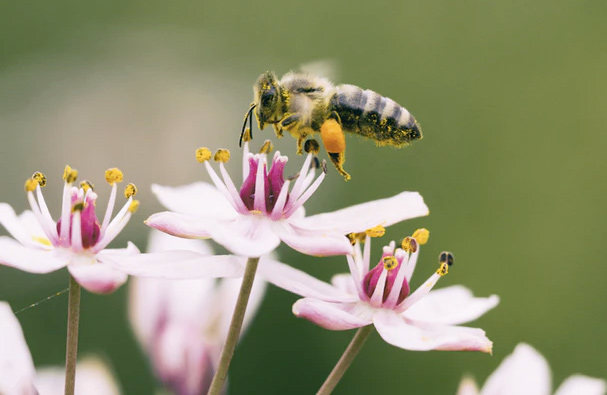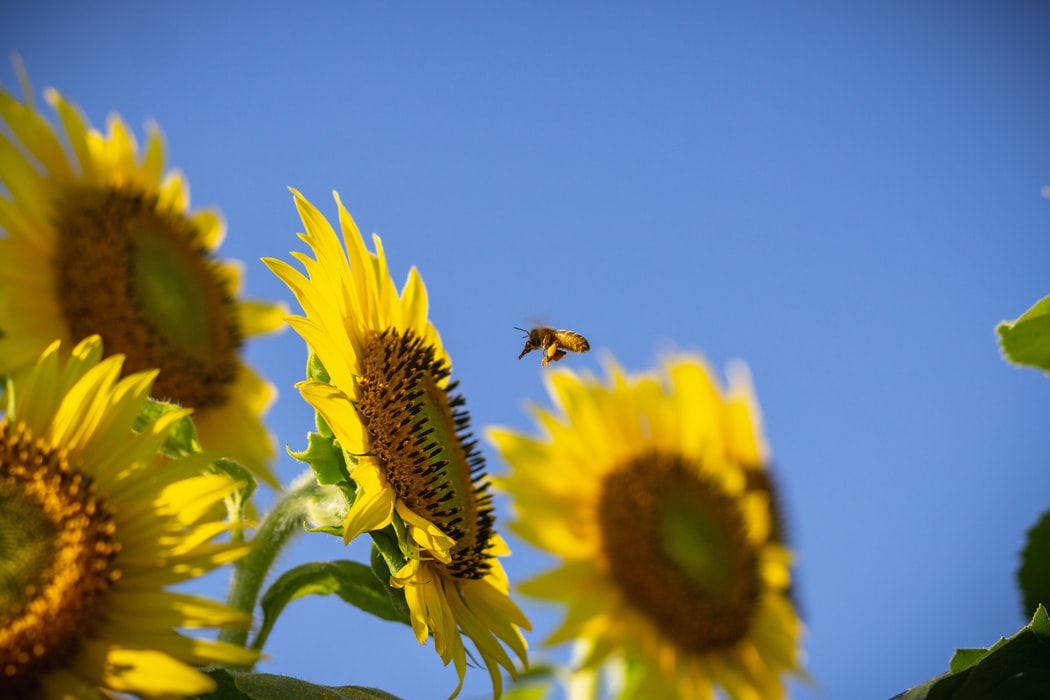
- Sustainable Planet -
- 5mins -
- 376 views
Minnesota to Pay Homeowners Who Replace Lawns with Bee-Friendly Wildflowers
State lawmakers in Minnesota have set aside $900,000 for pollinators, plus further money for a non-game wildlife fund. The program will pay Minnesota homeowners to turn their lawns in to bee-friendly habitats.
The state of Minnesota wants to pay its citizens to make their lawns bee friendly.
Included in Minnesota’s recent state omnibus Environment bill is a new law that provides $900,000 to homeowners to create bee habitats on their lawns. The one-year funding won’t be ready to distribute until next year, but its goal is to help revive the state’s declining bee population.

Expert insists a bee-friendly yard isn’t a danger
Last year’s cold, wet spring in Minnesota meant a slow start for bees and the plants they rely upon. While the Minnesota legislature can’t do anything about the weather, it has provided a boost to create bee habitats. The state’s board of water and soil resources will reimburse homeowners for planting bee-friendly plants, like creeping thyme, self-heal and dutch white clover.
“When people look at these flowers, they see a nuisance, they see a weed. I see a forage for pollinators,” James Wolfin, a graduate student who works at the University of Minnesota’s Bee Lab, told the Star Tribune. “One third of every bite you eat is due to a pollinator pollinating that plant,” Wolfin said.
It’s hoped the grants will boost all bee populations, but especially the endangered rusty patch bumblebee which pollinates tomatoes and apples.
Bee experts want us all to rethink what is a perfect lawn, starting with — believe it or not — the length of your grass. A longer cut is better, but you can still keep the basic look.
“We want you to still be able to have that family picnic, we want you to be able to have a catch on the lawn and we want you to put a little bit of food there to support the pollinators,” Wolfin said.
And he insists a bee-friendly yard isn’t a danger. “In the three years I have been doing this research, I have only been stung two times. And one of these times a bumblebee got caught between the tongue of my shoe and my foot, so I really don’t blame her,” Wolfin said.
Source: CBS

The plan could help replenish food sources for pollinators of all kinds
Minnesota has set aside $900,000 over one year to assist homeowners by covering much of the cost of converting traditional lawns by planting wildflowers, clover and native grasses in an effort to slow the collapse of the state’s bee population. The plan was trimmed down from the original House and Senate proposals, which would have provided funding for three years.
The plan could help replenish food sources for pollinators of all kinds, but will specifically aim at saving the rusty patched bumblebee, a fat and fuzzy species on the brink of extinction that seems to be making its final stand in the cities of the Upper Midwest.
The program would cover up to 75% of the cost of each conversion project, and up to 90% in areas with a “high potential” to support rusty patched bees.
Research at the University of Minnesota has shown that bumblebees are particularly important to the region. They land on flowering stems and vibrate at a frequency close to a musical C note, which unlocks pollen other insects can’t reach.
The loss of native prairie and other wild habitat across the country has made flowering lawns in suburbs and cities more and more important to pollinators, said James Wolfin, a graduate student at the U who has been researching bee diversity and habitat.
His research has focused on “bee lawns,” yards that have been seeded with small common flowers such as Dutch white clover, creeping thyme, self heal, ground plum and dandelions to grow up along with grass. The flowers have proved to be an excellent food source for bees while being cheap to plant and maintain, Wolfin said.
“A pound of Dutch white clover is about $7 and it grows low enough that people wouldn’t even have to change the way they mow their lawn,” Wolfin told the Star Tribune
Some 55 of the state’s roughly 350 species of bees have been spotted eating Dutch white clover alone, he explained.
“So just by not treating white clover like a weed and letting it grow in a yard provides a really powerful resource for nearly 20% of the bee species in the state,” Wolfin said.
Traditional turf lawns have essentially become some of the country’s largest mono-crops, Laurie Schneider, executive director of the Pollinator Friendly Alliance told the Star Tribune.
“Diversity is the key,” Schneider said.
Source: StarTribune
Non-game wildlife program to get $500k boost
Lawmakers also agreed to help bolster the habitat of larger wildlife. Under the spending plan, the state will use tax dollars for the first time to help fund the Department of Natural Resource’s (DNR) non-game wildlife program, which had been almost entirely funded through donations since its creation in the 1980s.
The number of people who donate to the program, which helped save bald eagles, peregrine falcons and trumpeter swans from the brink of extinction in the state, has been steadily falling each year. Contributors typically check a box on their Minnesota tax returns.
The state will give the program $513,000 next year to supplement the $2 million it typically expects from donations and matching grant programs.
State Rep. Rick Hansen, DFL-South St. Paul, said lawmakers have been trying to find an additional source of money for the program for several years. It will come from the Environment and Natural Resources Trust Fund, which is funded with money generated by the Minnesota Lottery.
“We thought it was important to get some dollars for this program,” Hansen said. “It’s a good use of the trust fund and we feel that the DNR will be able to prioritize its use.”
Program officials don’t have specific plans for the additional money yet, spokeswoman Lori Naumann told the Star Tribune
“We’ve had things on our wish list for years, and we’ll go through a process to determine which projects now we can fund,” Naumann said.
Source: StarTribune

